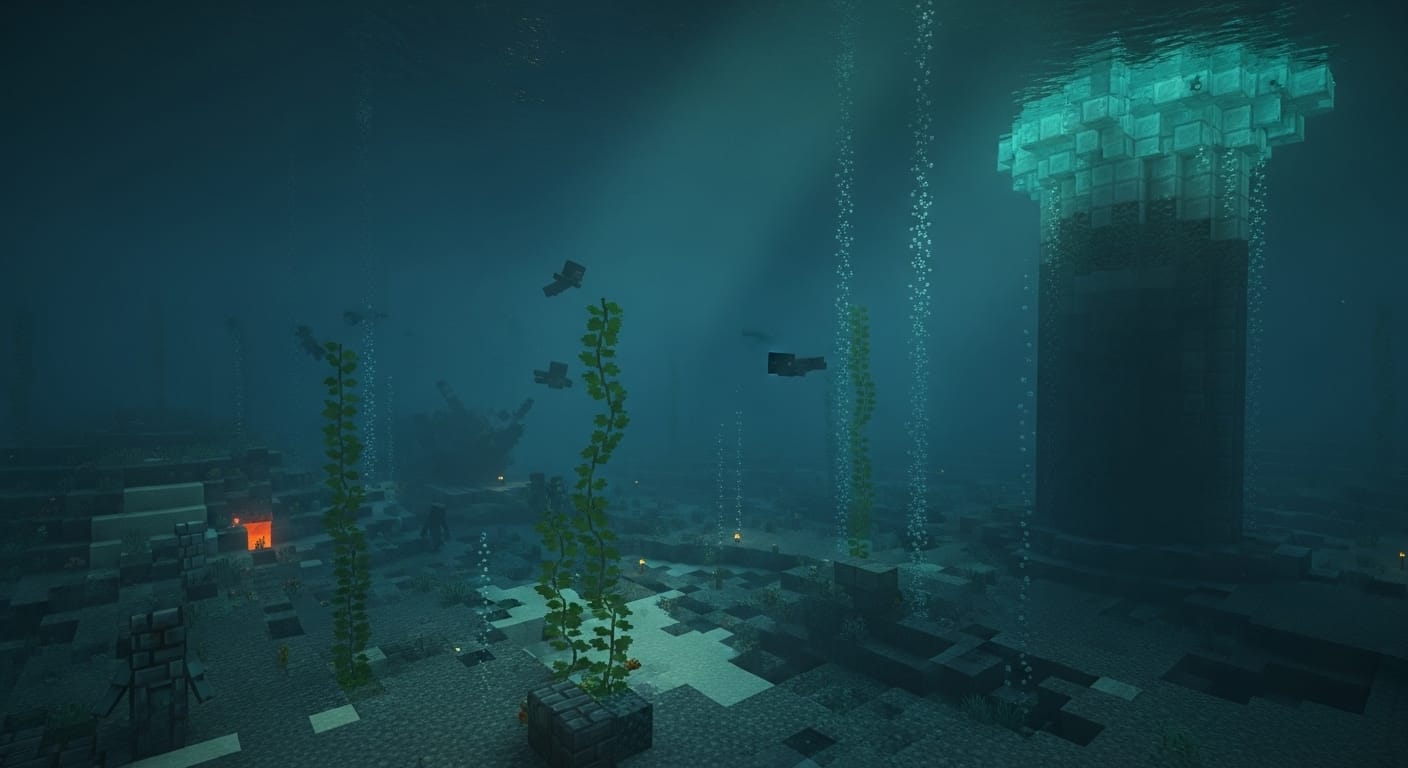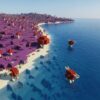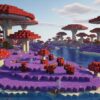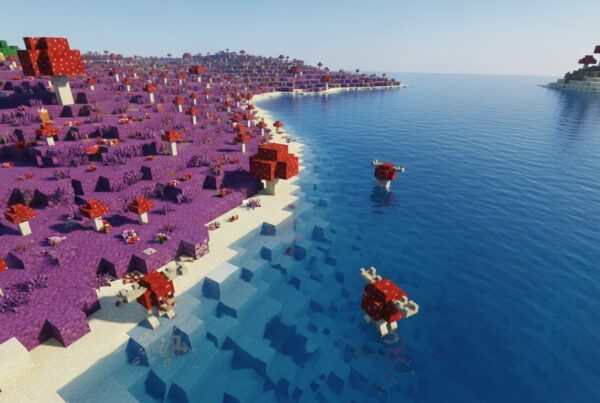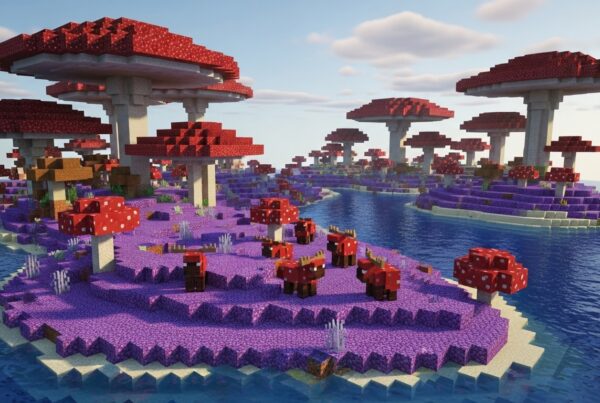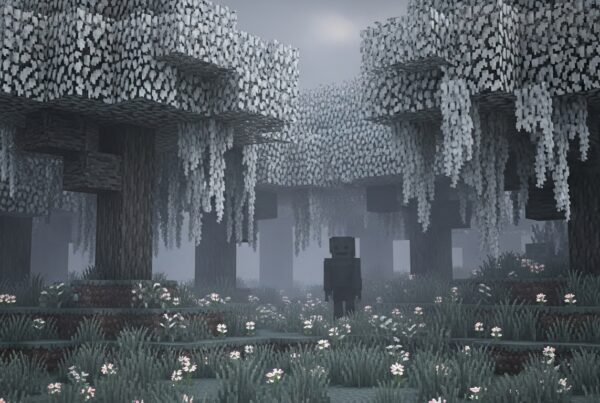The Deep Cold Ocean Biome in Minecraft is a frigid, shadowy underwater environment located between the Cold Ocean and Deep Frozen Ocean. Its waters are darker and deeper than standard ocean variants, and visibility is reduced due to thick blue fog. While not completely frozen, the chill of this biome is evident in its muted seafloor colors, minimal vegetation, and abundance of drowned mobs.
Players exploring the deep cold ocean will find shipwrecks, ruined portals, and occasionally ocean monuments, making it a rewarding—yet perilous—biome for deep-sea adventurers.
Biome Overview
Location and Generation
- The Deep Cold Ocean generates far from shorelines, often bordering Cold Ocean or Deep Frozen Ocean biomes.
- The seabed depth typically ranges from Y = 30 to 45, making it one of the deeper ocean variants.
- It features steep underwater drops, magma vents, and wide ravines.
Climate and Appearance
- Classified as a cold biome, with water temperature around 0.5.
- The water has a dark blue tone, and underwater fog appears deep teal in color.
- Due to limited light penetration, this biome feels darker than most ocean types.
- Precipitation above is rain, not snow, except where adjacent land biomes have colder climates.
Biome Transitions
- Often transitions smoothly into Cold Ocean, Deep Frozen Ocean, or Frozen Ocean biomes.
- Occasionally borders Deep Lukewarm Ocean or Deep Ocean depending on world generation.
- Players can spot biome transitions by watching for ice formation, lighter water color, or increased kelp growth.
Terrain and Natural Features
Seafloor Composition
- The seabed is primarily gravel, stone, and sand, with occasional clay patches.
- Coal ore, iron ore, and magma blocks can appear along underwater ravines or caves.
- Magma vents sometimes generate natural bubble columns that pull players downward.
Vegetation
- Sparse plant life—mostly seagrass and small kelp patches.
- Coral, sea pickles, and tropical vegetation do not spawn here due to the low temperature.
Water Appearance and Visibility
- Water color: Deep navy blue.
- Fog color: Muted teal-green underwater haze.
- Light behavior: Reduced brightness and clarity beyond a few blocks of view distance.
Structures
- Shipwrecks – Often partially buried in gravel; loot includes treasure maps, emeralds, and enchanted gear.
- Ruined Portals – Found scattered across the seabed, containing obsidian, gold nuggets, and enchanted tools.
- Ocean Monuments – Occasionally spawn in deep cold oceans, surrounded by Guardians and containing sponge rooms and prismarine.
- Underwater Ravines and Caves – Generate deep trenches with magma vents and ores exposed.
Mobs Found Here
| Mob Type | Mobs | Notes |
|---|---|---|
| Common Passive | Cod, Salmon | Spawn in small schools; main aquatic life here. |
| Neutral | Squid, Dolphin | Dolphins are uncommon but may lead players to treasure. |
| Hostile | Drowned, Guardians, Elder Guardian | Drowned spawn frequently in the dark depths; Guardians appear only near Monuments. |
| Ambient | None | No bats or passive ambient mobs underwater. |
Blocks and Resources
Common Blocks
- Gravel, Sand, Stone, Clay, Magma Blocks, Coal Ore, Iron Ore.
Structure Loot
- Shipwrecks: Treasure maps, iron, lapis lazuli, emeralds, enchanted leather gear.
- Ruined Portals: Gold tools, obsidian, flint and steel, enchanted swords.
- Ocean Monuments: Prismarine shards, crystals, sponge rooms, and gold blocks hidden within the monument’s core.
Unique Drops
- Prismarine Shards and Crystals (from Guardians).
- Nautilus Shells (rare drops from Drowned).
- Sponges (from Elder Guardians).
Exploration and Survival Tips
Preparation
- Equip Respiration and Aqua Affinity helmets for longer dive times.
- Use Depth Strider boots to move faster underwater.
- Bring Night Vision and Water Breathing Potions for visibility and survival.
- Carry doors or trapdoors to create quick air pockets while exploring ruins.
Dangers
- Frequent Drowned mobs pose a constant threat.
- Limited visibility and depth pressure make retreating difficult.
- Magma vents can pull players downward into drowning traps.
Strategies
- Use a Conduit to gain underwater breathing and vision within a 96-block radius.
- Build underwater outposts using glass or prismarine blocks for better visibility.
- Use Sea Lanterns or Glowstone to light pathways and mark routes.
- Explore monuments with Milk Buckets to counter Guardian mining fatigue.
How to Locate the Biome
Players can find the Deep Cold Ocean Biome easily in Java Edition using: /locatebiome minecraft:deep_cold_ocean
This command reveals the nearest coordinates of the biome. It typically appears far from land, surrounded by other deep ocean variants. In Bedrock Edition, exploration with maps or Elytra flight is the best method.
Fun Facts and Trivia
- Added in Minecraft Java Edition 1.13 (Update Aquatic).
- Shares many spawn parameters with the Deep Ocean Biome but features colder temperature and darker water.
- No coral reefs or sea pickles spawn due to the cold environment.
- It’s one of the few biomes where Ocean Monuments can generate naturally.
Version History
| Version | Changes |
|---|---|
| 1.13 (Java) | Introduced the Deep Cold Ocean as part of the Update Aquatic overhaul. |
| 1.18 | Adjusted depth generation and seabed variation. |
| 1.20+ | Minor visual and lighting improvements for underwater fog effects. |
Conclusion
The Deep Cold Ocean Biome combines beauty and danger beneath its dark waters. With eerie silence, faint light beams, and hidden monuments guarded by powerful sea mobs, it challenges even veteran adventurers. Proper preparation—enchanted gear, potions, and conduits—turns this frigid abyss into a rewarding destination for treasure hunters and builders alike.
Explore wisely, light your path, and discover the secrets buried in Minecraft’s frozen depths. 🌊
